The recent implementation of tariffs has the media buzzing about increased recession odds as the consumer faces potentially higher costs. While recent economic reports, like the latest employment report, still show robust growth, those data points run with a lag that hasn’t yet caught up with reality.
As we have discussed, the American consumer is the backbone of the US economy and comprises nearly 70% of the GDP calculation. While GDP surged following the economic shutdown due to the massive flood of stimulus that fueled a savings surge, consumption as a percentage of the economy has remained flat since the turn of the century.
The reason is that despite the surge in savings, the consumer was also faced with rising inflation, which left them struggling to make ends meet.
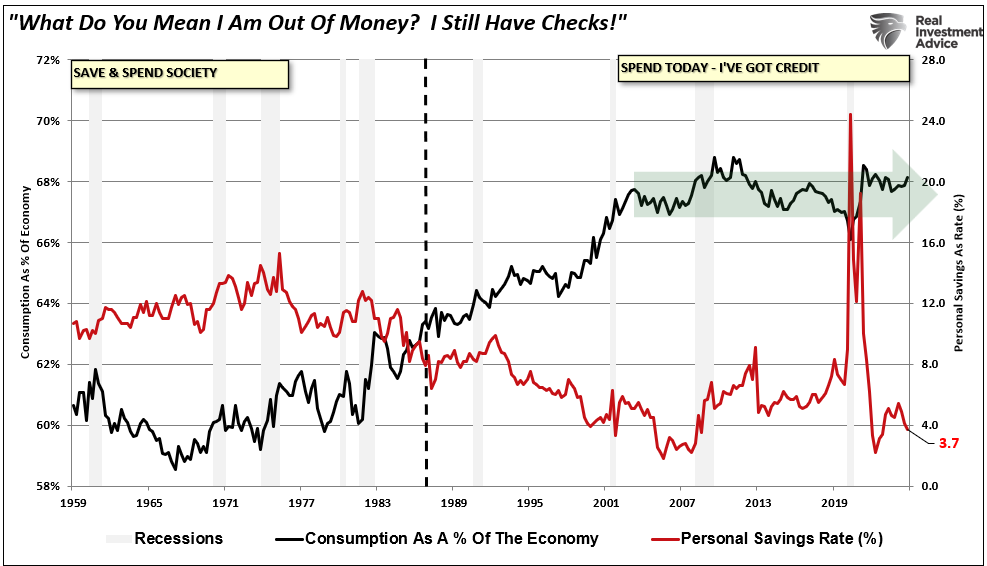
This dilemma is better illustrated by the chart below. The blue line is the personal savings rate, and the red line shows the debt needed annually to bridge the gap between the inflation-adjusted cost of living and savings and incomes. As shown, at the turn of the century, the consumer was no longer able to fund their living standard through just income and savings.
The fact that consumers were forced to take on increasing debt levels to maintain their living standards explains why consumption as a percentage of GDP has remained stagnant over the same period.
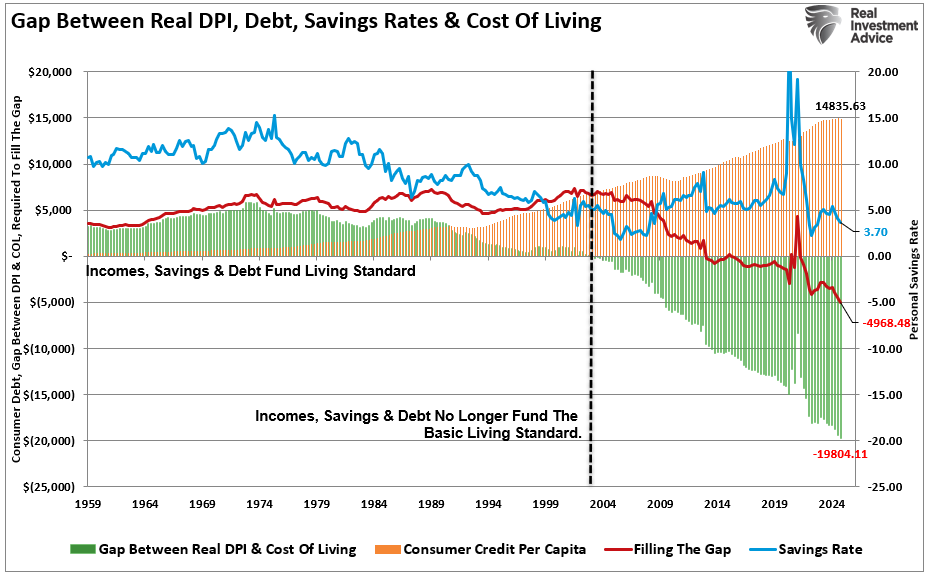
At the heart of the problem is the collapse of household balance sheets in the lower-income and middle-income brackets. These groups have depleted the excess savings accumulated during the pandemic and are turning to high-interest borrowing to bridge the gap.
The Philadelphia Federal Reserve reported that the share of active credit card accounts making only minimum payments surged to 10.75% in Q3 2024—a record high. This statistic isn’t just a warning about credit health; it points to widespread cash flow stress.
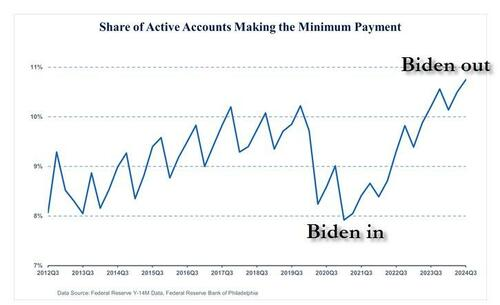
In addition, more consumers are falling behind on their monthly card payments. The balance-based 30+ days past due rate increased 33 basis points year-over-year to 3.52% in the third quarter of 2024.
This represents more than double the delinquency rate of 1.57 percent at the pandemic low in the second quarter of 2021.
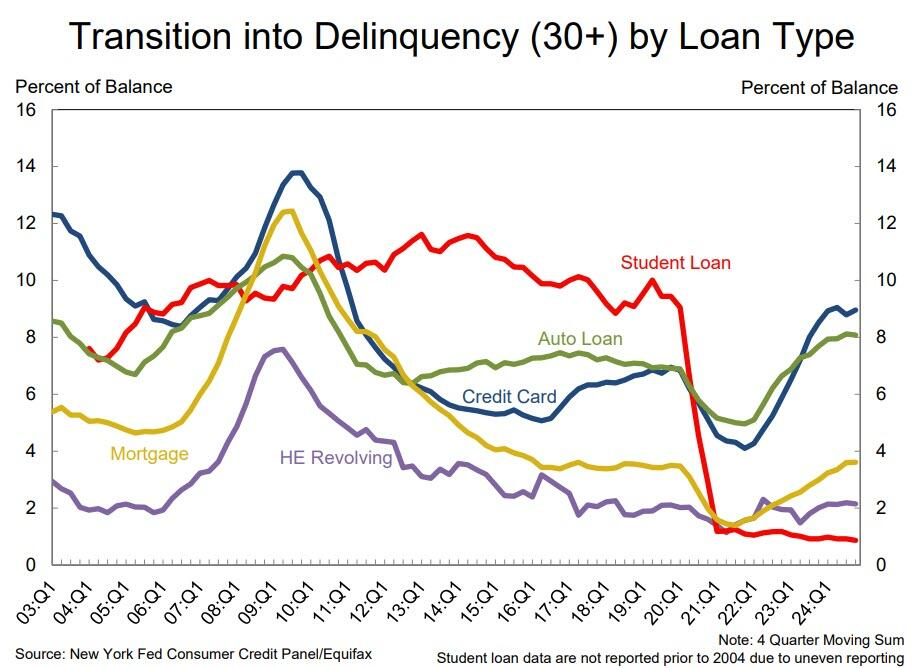
More alarming is the growing use of Buy Now, Pay Later (BNPL) services. Notably, those services are not being used for large discretionary purchases but for food.
Recent surveys show that more consumers are increasingly relying on installment payment platforms like Klarna and Affirm to afford meals. Initially, the design of the BNPL model was for luxury or semi-durable goods. However, its expansion into groceries signals deep-rooted affordability issues. Debt is no longer just a tool for convenience; it’s a necessity for millions’ survival.
The problem with Trump’s trade war now is that it comes at a time when consumers are already showing clear signs of distress. According to recent data, both from the Federal Reserve and corporate earnings reports, the consumer’s financial cushion that kept consumer spending alive in 2021 and 2022 is gone.
What remains is a fragile consumer base increasingly reliant on credit and debt to afford necessities. While inflation has slowed, its damage is lingering. Now, there is growing evidence suggesting that a recession and deflation are more immediate risks.
Consumer Confidence Declining
Consumer stress isn’t limited to anecdotal indicators—it’s now showing up in corporate earnings and executive commentary. During the company’s earnings call, Doug McMillon, CEO of Walmart, stated that many customers are under “budget pressure.” They are also exhibiting “stressed behaviors,” including spending reductions across general merchandise. Specifically, he warned that “For many customers, the money runs out before the month does.”
Similarly, Dollar General CEO Todd Vasos painted an equally concerning picture. He described his customers as “struggling more than ever before.” Todd added that some are now forgoing non-discretionary items, like medication or hygiene products, to afford groceries and fuel.
He said, “These customers are making trade-offs we haven’t seen in years.” Concurring with that warning was Jane Fraser, CEO of Citigroup. She observed that consumers are “becoming more cautious” and focusing spending on smaller, lower-cost purchases. While this signals a growing defensive posture, often associated with recessionary conditions, they are also deflationary. When consumer behavior shifts en masse from aspirational to survival-based, the ripple effects are inevitable.
When we combine all the various measures of confidence into a single index, the correlation to GDP is unsurprising.
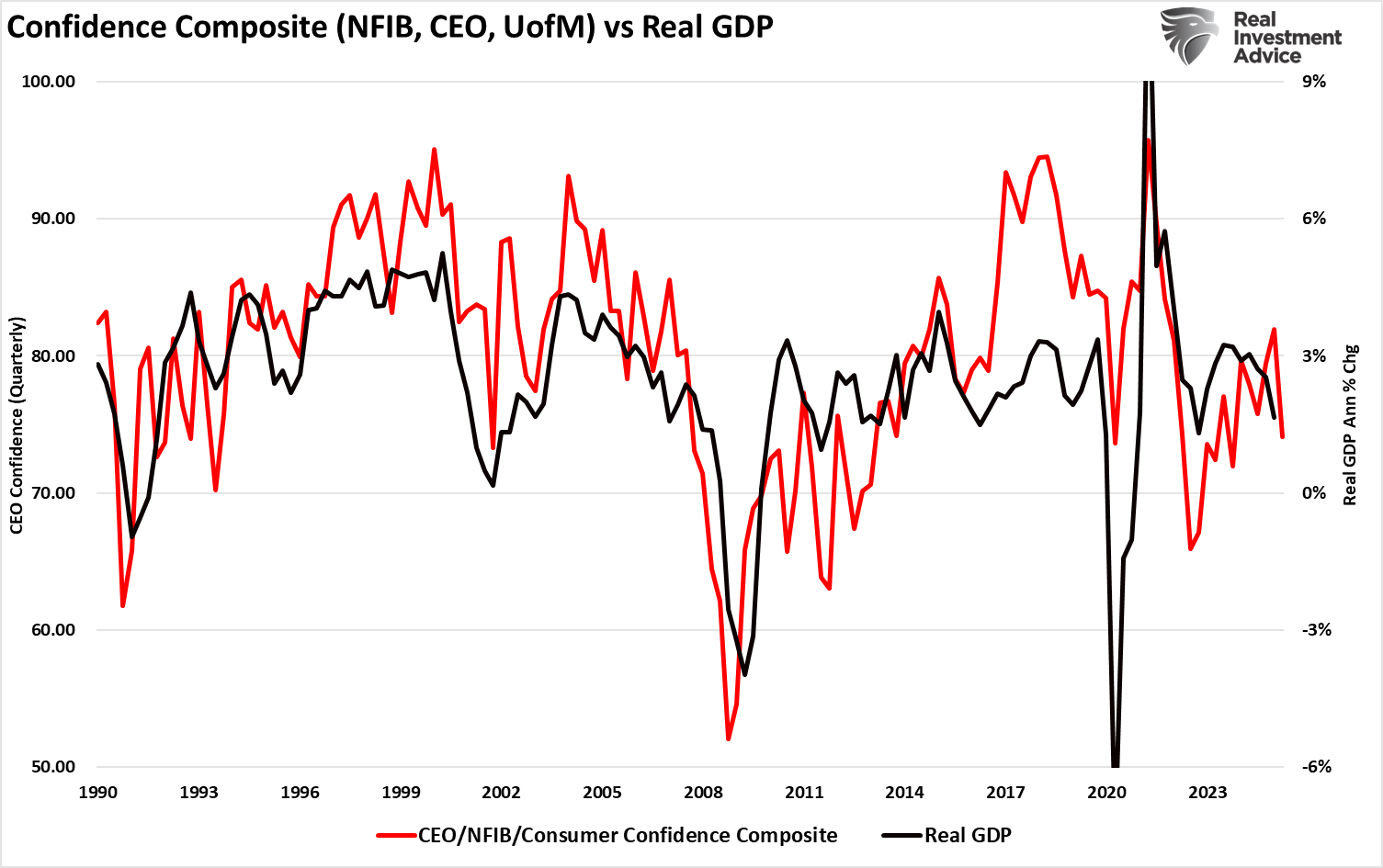
Furthermore, that decline in confidence leads to changes in the rate of inflation. This should be unsurprising since prices reflect supply and demand. As demand declines, prices fall to levels where demand for those products, goods, or services exists.
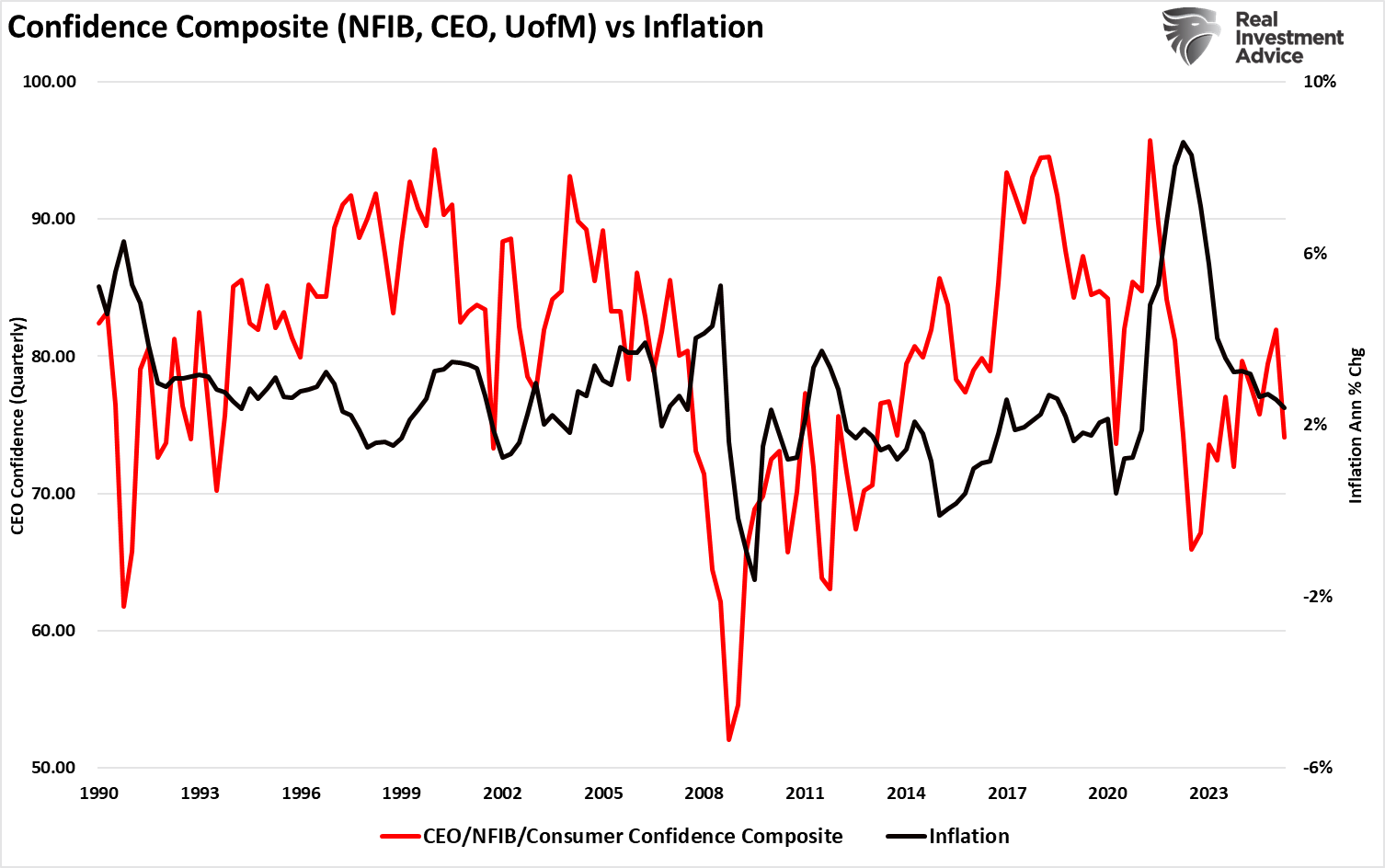
The data supports this narrative. Real personal consumption expenditures, the most significant component of GDP, are weakening. Once optimistic, the Atlanta Fed’s GDPNow model has revised estimates lower. Such was due to the decline in spending on goods and services. High interest rates, implemented by the Federal Reserve to curb inflation, now exert a secondary effect. Those rates are strangling credit access and making existing debt more expensive.
Housing data also reflects economic strain. Residential building permits and starts have declined markedly over the past six months, and homebuilder confidence has also deteriorated. First-time homebuyers—often a leading indicator of broader consumer strength—have retreated sharply due to affordability concerns.
When combined with increased pressures from higher taxes (read tariffs), the data is sending a warning.
The Risk Of Recession (and Deflation) Have Increased Markedly
The current data point toward a recessionary risk. Deflation is highly correlated to economic growth rates, wages, and rates. Unsurprisingly, recessions reduce inflation as demand for goods and services collapses. While inflation may be “sticky,” the recent decline in bond yields and wages suggests consumer demand will decline this year.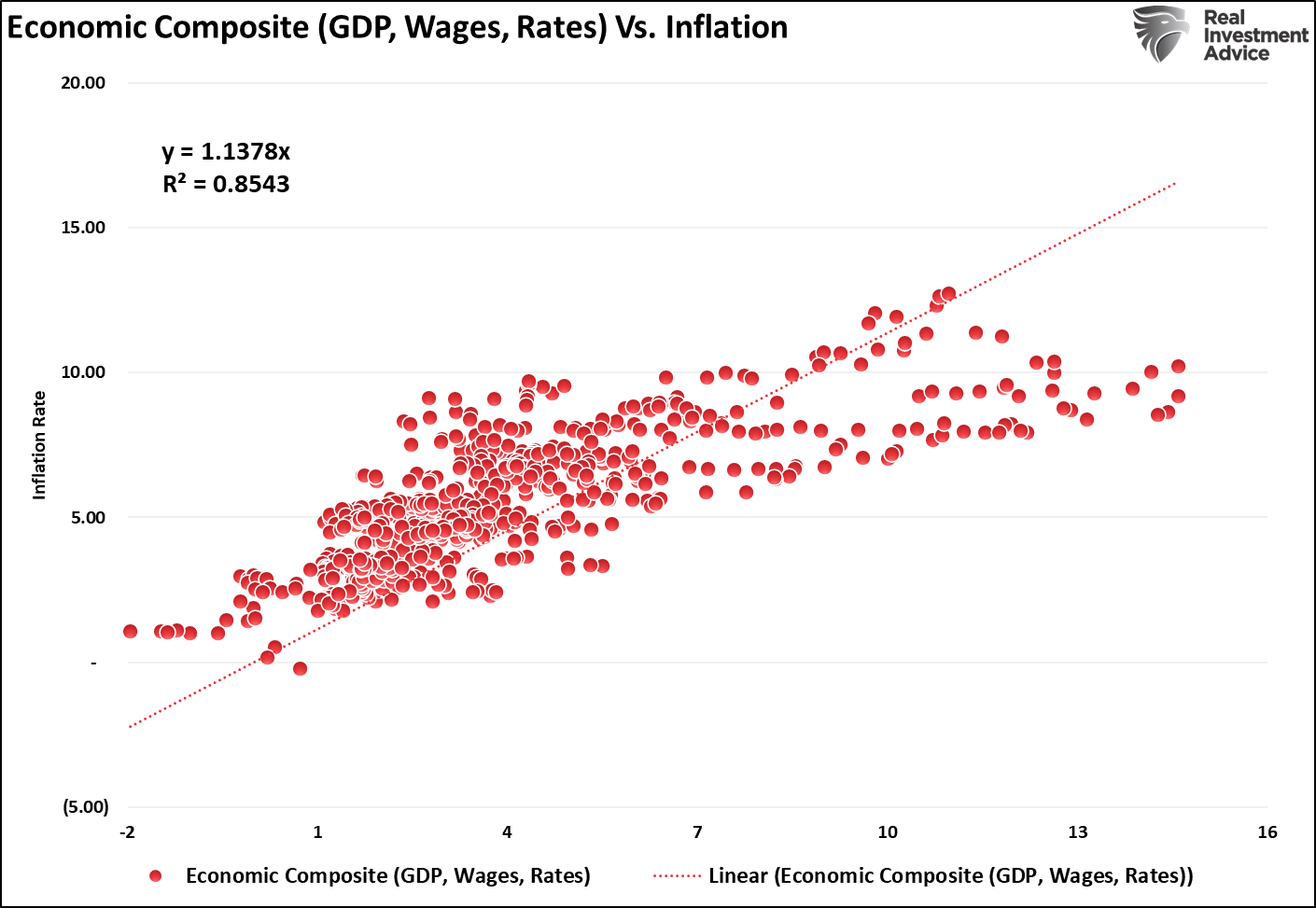
When tariffs, an additional tax on consumers, increase the cost burden, the reaction historically is not expansionary. As consumers contract spending, employers reduce business investment (demand) and cut employment (supply of wages). As shown, while volatile, plans to expend capital for investment purposes correlate with real private investment (which feeds into GDP.)
While this data does not currently reflect the tariff impact, it was already suggesting much weaker growth. We suspect the outlook for CapEx has declined markedly in recent weeks.
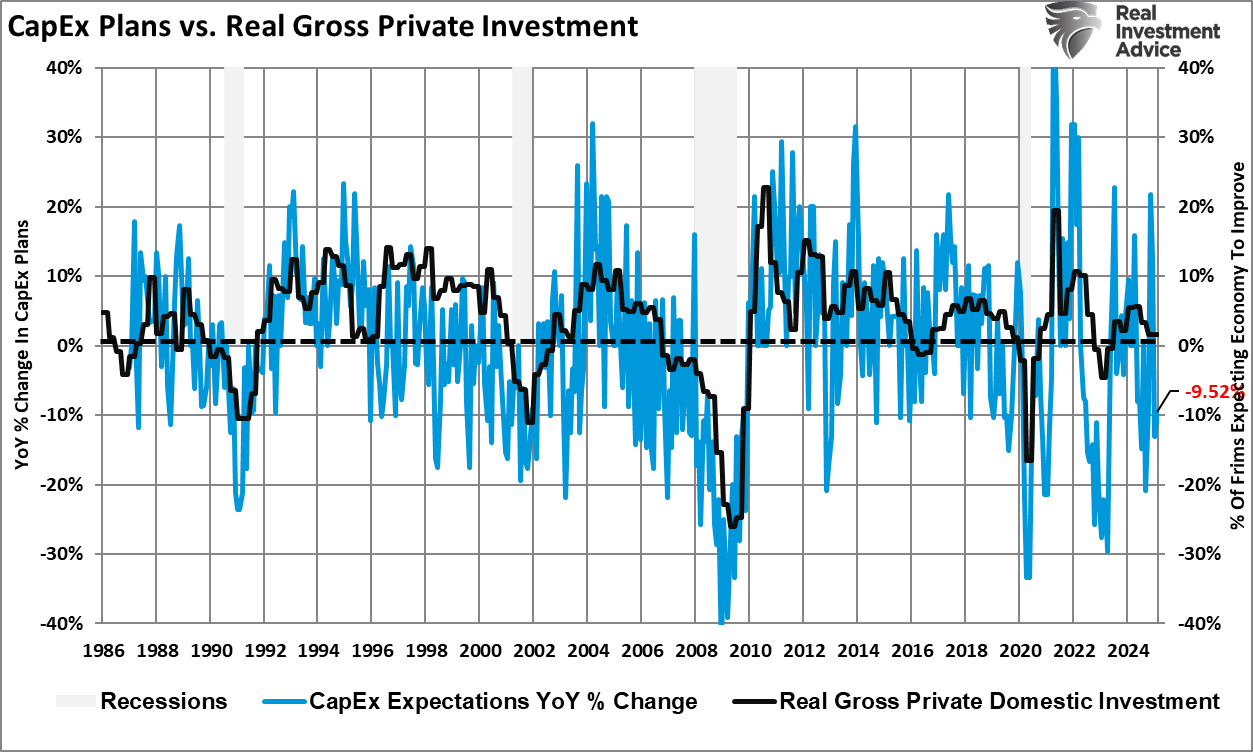
We are seeing “demand destruction” caused by rising input costs due to tariffs against an already weak consumer backdrop. That combination of inputs will likely lead to higher unemployment, slower growth, and deflationary pressures in the economy unless there is a supply shock due to some unforeseen event like another “oil embargo.”
Outside of such an event, in an environment where consumer demand is falling due to the inability to afford what’s available, suppliers will have to cut prices to find buyers.
Furthermore, credit conditions also reinforce the recession risk. Banks have tightened lending standards across consumer and commercial lines as credit card delinquencies have ticked up sharply, particularly among borrowers aged 18–39. The Federal Reserve’s Senior Loan Officer Opinion Survey shows a continued reduction in credit availability—making it even harder for stretched consumers to borrow their way through.
This reflects a critical turning point: the U.S. consumer is no longer a driver of economic growth but a potential drag on it. When nearly 70% of GDP depends on consumption, a weakening consumer poses systemic risks. A policy pivot may be necessary, and the calls for further Fed rate cuts this year are rising, with markets expecting four rate cuts this year.
However, for now, with inflation still above target and the labor market gradually cooling, policymakers lack the room to cut rates aggressively without potentially reigniting price pressures. However, as the impact of tariffs causes a marked reduction in demand, those fears will likely give way to concerns about economic disruption.
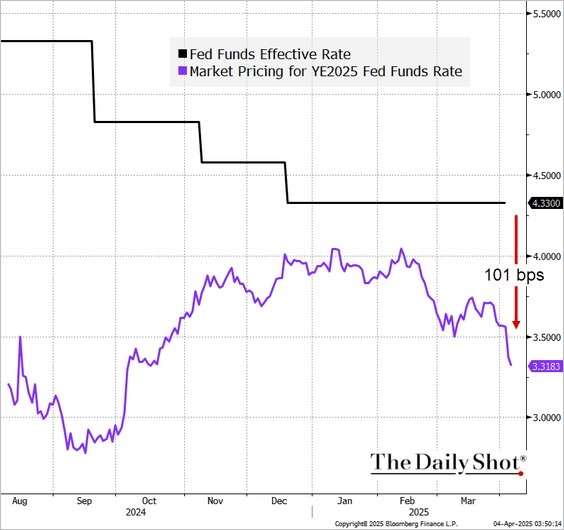
In short, the American consumer is tapped out. The savings buffer is gone, wage growth is declining, and credit costs are rising. Corporate America is already adjusting to this new reality, with companies issuing cautious guidance for 2025. Even the tech sector—previously resilient—is showing signs of demand compression in consumer-facing verticals.
Unless wage growth accelerates or interest rates decline meaningfully, the pressure on households will continue to mount. That means recession and, ultimately, deflation—the more immediate threat to the U.S. economy. While deflation may seem the “out of consensus” view – if demand destruction continues unchecked, the more pressing concern is a downturn in demand. Declining real incomes and credit exhaustion are already warning of that risk.
Investors and policymakers would do well to focus less on inflation in isolation and more on the consumer’s deteriorating balance sheet. That’s where the next economic shock is currently hiding.
